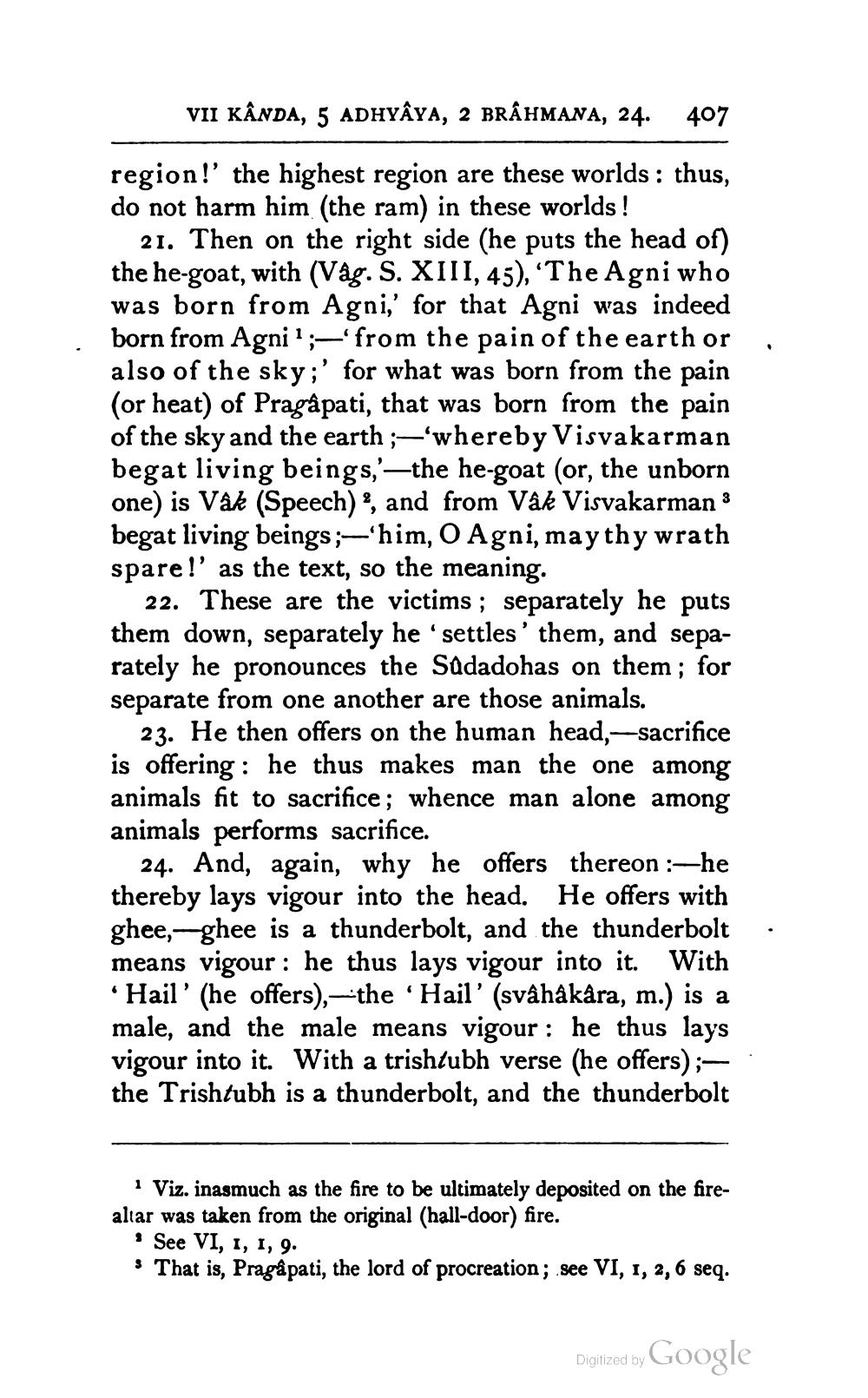________________
VII KÂNDA, 5 ADHYAYA, 2 BRÂHMANA, 24.
407
region!' the highest region are these worlds : thus, do not harm him (the ram) in these worlds!
21. Then on the right side (he puts the head of) the he-goat, with (Våg. S. XIII, 45), 'The Agni who was born from Agni,' for that Agni was indeed born from Agni 1;—'from the pain of the earth or also of the sky;' for what was born from the pain (or heat) of Pragâpati, that was born from the pain of the sky and the earth ;—'whereby Visvakarman begat living beings,'—the he-goat (or, the unborn one) is Vak (Speech), and from Vâk Visvakarman 3 begat living beings;—'him, O Agni, may thy wrath spare!' as the text, so the meaning.
22. These are the victims; separately he puts them down, separately he 'settles' them, and separately he pronounces the Sadadohas on them; for separate from one another are those animals.
23. He then offers on the human head, -sacrifice is offering : he thus makes man the one among animals fit to sacrifice; whence man alone among animals performs sacrifice.
24. And, again, why he offers thereon :-he thereby lays vigour into the head. He offers with ghee,-ghee is a thunderbolt, and the thunderbolt means vigour : he thus lays vigour into it. With • Hail' (he offers),--the 'Hail' (svâhâkâra, m.) is a male, and the male means vigour: he thus lays vigour into it. With a trishtubh verse (he offers); the Trishtubh is a thunderbolt, and the thunderbolt
1 Viz. inasmuch as the fire to be ultimately deposited on the firealtar was taken from the original (hall-door) fire. . See VI, 1, 1, 9.
That is, Pragấpati, the lord of procreation; see VI, 1, 2, 6 seq.
Digitized by Google




